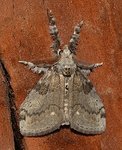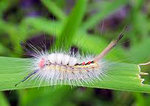This week’s column comes courtesy of the mom of one of my employees that had a nasty nature experience. Beware the white caterpillar.
You see white caterpillars are beautiful, but within …
This item is available in full to subscribers.
Please log in to continue |


This week’s column comes courtesy of the mom of one of my employees that had a nasty nature experience. Beware the white caterpillar.
You see white caterpillars are beautiful, but within their beauty they hide a venom that can give you a nasty rash. Their fuzzy complexion hides the fact that their fuzzy hairs have quill-like tips that can inject venom into your skin that will cause a rash similar to poison ivy.
The caterpillars of the White-Marked Tussock Moth have what can best be described as toxic pincushion hairs on their backs which protect them from predators, humans included. Touching them will result in a very irritating rash, especially on the inner arms, neck and stomach areas.
The insect’s quill-like hairs are connected to poison sacs, become embedded into the skin causing a dermal reaction. While most individuals know that bees, wasps, hornets and some ants can sting to defend themselves or their nests, few realize that handling some caterpillars can produce similar painful results.
Recognizing the stinging caterpillar species may prevent irritating encounters. Caterpillars, of course, are the larval stage of moths or butterflies. Many of these little fellows have spines and barbed hooks, however, in most species, these are harmless, and strictly for show.
However, as mentioned above, there are a few stinging caterpillars out there. Fortunately only the caterpillar stage of these species sting. The caterpillars may be found feeding on an extremely wide variety of trees, both deciduous and coniferous, including apple, birch, black locust, cherry, elm, fir, hackberry, hemlock, hickory, larch, oak, rose, spruce, chestnut and willow.
The white-marked tussock moth is common throughout the northeast and can usually be seen around any front porch light left on past dusk. As common as the moth is to see, the white caterpillar seems to be almost invisable.
Because the colors are not showy it seems to just fade into the background, which is why people tend to get stung. Instead of going out of your way to find these caterpillars, most people get stung by accidentally putting their hand down on one or brushing against one in the backyard.
So be careful while enjoying your backyard this summer, beware the white caterpillar.
Comments
No comments on this item Please log in to comment by clicking here